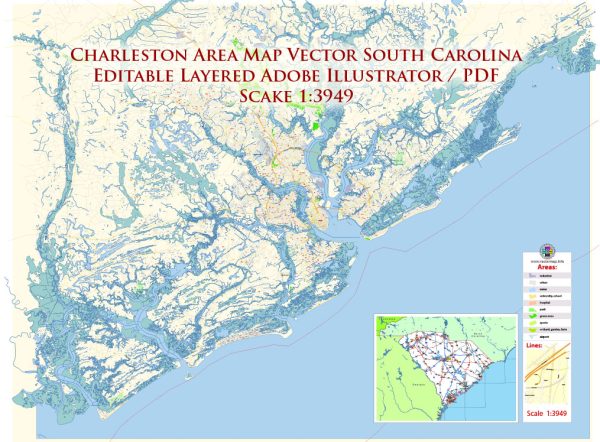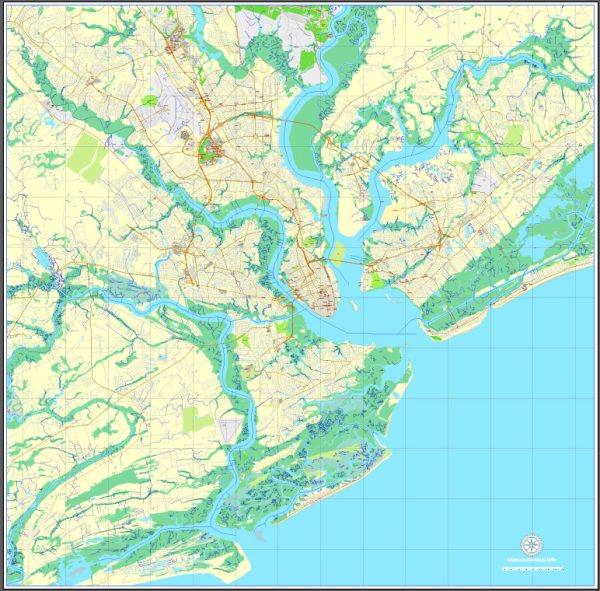Charleston, South Carolina, has a rich history of urban development that dates back to its founding in 1670. The city has played a significant role in American history, and its urban development reflects various historical and cultural influences.
- Colonial Era (1670-1776):
- Charleston was established as Charles Towne in 1670 by English settlers led by Sir Anthony Ashley Cooper. The city’s layout was influenced by the Grand Model, a comprehensive plan for the Carolina colony designed by the philosopher John Locke.
- The city’s early growth was driven by its strategic location and success as a major port, exporting rice and indigo. The urban layout featured a grid pattern with a central market, which remains a prominent feature today.
- Antebellum Period (1776-1860):
- Charleston became a wealthy and influential city during the Antebellum period, with an economy based on rice and cotton plantations.
- The architecture of this era is reflected in the historic homes and buildings, particularly in neighborhoods like the Battery and Rainbow Row. Many of these structures showcase Georgian and Federal styles.
- Civil War and Reconstruction (1861-1877):
- Charleston played a pivotal role in the Civil War, being the site of the first shots in 1861. The city suffered significant damage during the conflict.
- During Reconstruction, the city faced economic challenges, but efforts were made to rebuild. The establishment of historic districts and preservation initiatives began to take shape.
- Late 19th to Early 20th Century:
- Charleston continued to evolve as a commercial and cultural hub. The construction of the Arthur Ravenel Jr. Bridge in 2005 transformed the city’s skyline and improved transportation connectivity.
- 20th Century and Preservation Efforts:
- In the mid-20th century, Charleston faced challenges such as suburbanization and the impact of hurricanes. However, the city also saw a revival of interest in its historic architecture.
- The Historic Charleston Foundation, founded in 1947, played a crucial role in preserving and promoting the city’s historic character. The establishment of strict zoning and preservation laws helped protect the unique architectural heritage.
- Contemporary Era:
- Today, Charleston is a popular tourist destination known for its well-preserved historic district, cobblestone streets, and antebellum architecture. The city has balanced preservation with modern development to maintain its historic charm.
- Cultural Impact:
- Charleston’s Gullah culture, rooted in the African heritage of the region’s enslaved population, has had a profound impact on the city’s history, influencing art, music, and cuisine.
Charleston’s urban development history is a dynamic narrative that reflects the ebb and flow of economic, cultural, and social forces over centuries, contributing to its unique and charming character.








 Author: Kirill Shrayber, Ph.D.
Author: Kirill Shrayber, Ph.D.